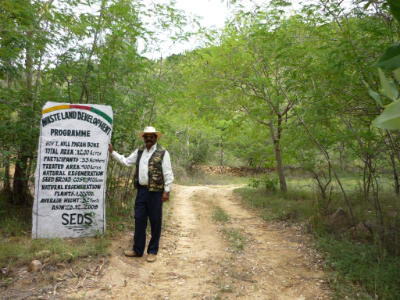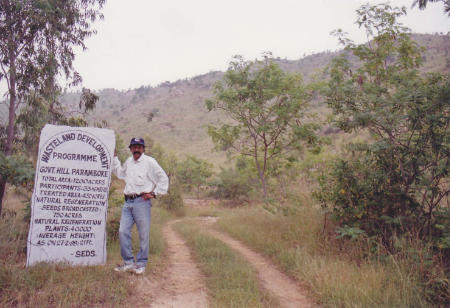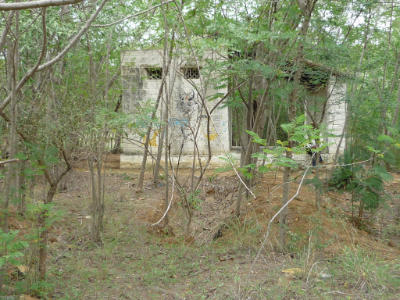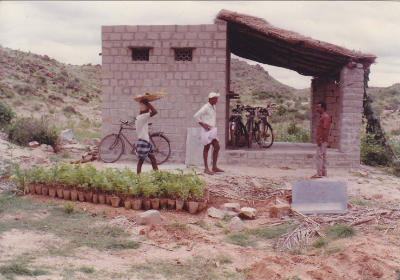
Natural Resource Management
Gradually, vegetation began to grow around the perimeter of these check dams. More check dams were built and the groundwater levels began to rise. With more water, local varieties of vegetation were introduced to bind and preserve the topsoil. With better topsoil, the crop yield improved. The increasing number of trees and vegetation served as ideal cover for returning wildlife. Several species such as wild boar, black buck and even leopards have been sighted in the area. Suitable fish varieties have been introduced into the check dams and tanks. The fish fertilize the soil and also serve to supplement the diet of the cultivators.
Reforestation near 'Rajen's hillOur NRM programmes have been so visibly successful that the villagers today act as the guardians of tree cover, not allowing anyone to cut trees. Today, SEDS has brought about the reforestation of more than 4000 acres of land and our expertise in this area has been sought out by governing bodies from other districts as well. Vital steps towards a greener tomorrow.
Reforestation near 'Rajen's hill



